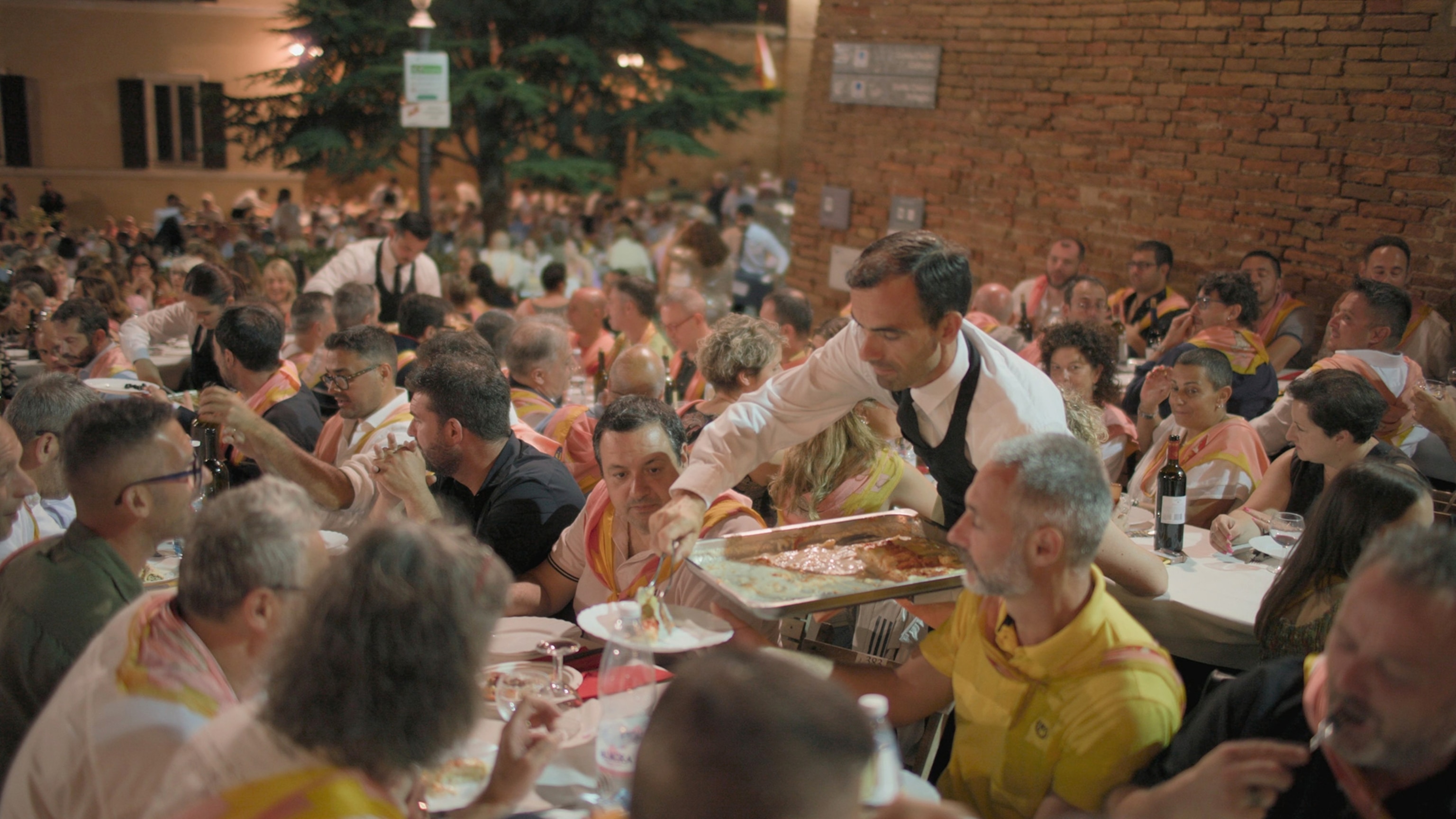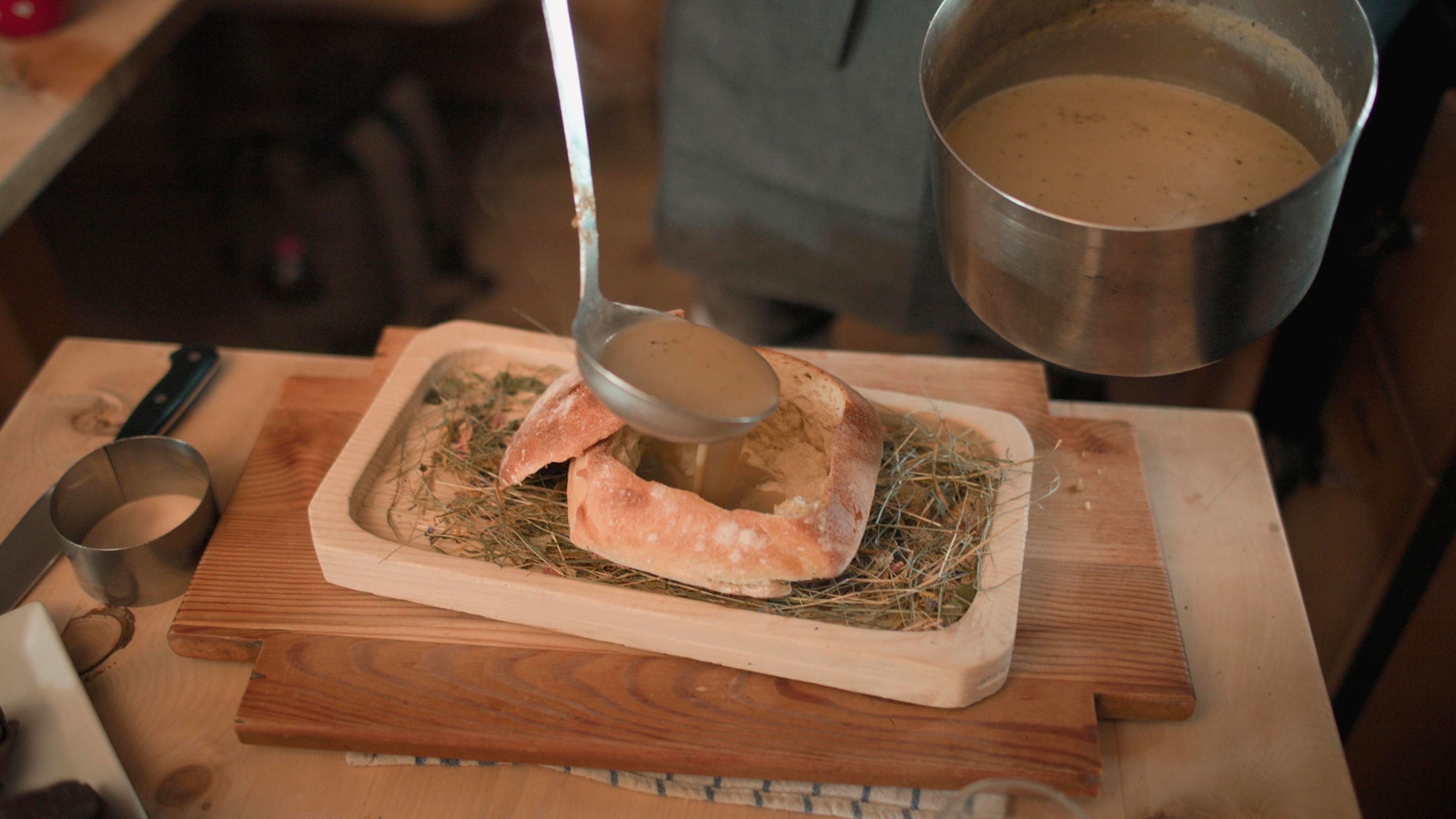Stanley Tucci’s new series has been 20 years in the making — or at least, that’s how long it’s been since the idea first struck him. His mission? To ignite curiosity, not only about Italy, but the ways in which we can explore the world through food. Tucci in Italy, which premieres May 18 on National Geographic, follows the acclaimed actor and author as he navigates the culinary traditions and complexities of five distinct regions: Tuscany, Lombardy, Trentino-Aldo Adige, Abruzzo, and Lazio.
Part love letter, part cinematic deep-dive into the connections between food, people, and landscapes, the new series sees him meet people from all walks of life: immigrants, pioneering chefs, militant traditionalists, and even Tuscan cowboys. His belief is that no matter who we are and where we come from, we all have our particular ways of living, eating and loving, but that doesn’t mean we should be divisive.
Tucci in Italy premieres on National Geographic starting May 18th at 8/7c and all episodes stream on Disney+ and Hulu starting on May 19th. Check local listings.
“Politics, ideals, religions, money — these things tear people apart. But food doesn’t do that; it brings them together,” says the second-generation Italian American. “That’s why I wanted to make this show, but to make it happen you must have the right stories and the right people. We had a wonderful team of researchers for that. Viewers can expect as in-depth an exploration as possible — within a commercial format.”
Ahead of the series launch, we caught up with Tucci in London, where he touched on everything from Italy’s most iconic dishes and the best meal he ate while filming, to the locals he met who evoked memories of his own Italian family.
From culinary pioneers in Lombardy to staunch traditionalists in Tuscany, the show highlights how Italy’s cuisine is evolving and rooted in centuries-old lores. What surprised you most about that?
It only works if people don’t try to change things for the sake of changing them. If it ain’t broke, why fix it? That never works. Take restaurateur Giulio Picchi in Florence [of Cibrèo] and his collaboration with Japanese chef Masaru Kawai — that’s different, because they’re digging deeply into Tuscan and Japanese recipes and asking, ‘where is this fusion?’ to make something new using these incredible ingredients. It’s like a science, almost, and takes real instinct, talent and intellect to pull that off.
What I loved about the young Mr. Picchi is that his family pushed the envelope when it came to Italian cooking, yet he still respected the traditions — and he’ll always maintain them. Just because he opened a restaurant that’s an Italian-Japanese fusion doesn’t mean he’s going to forget how to make pasta e fagioli. They’re not mutually exclusive; there’s room for everything.
Each episode involves you breaking bread with both locals and immigrants who have settled in Italy. What did these gatherings teach you about community spirit?
Italy is really welcoming, but the contemporary rhetoric now is that we have too many immigrants — and they’re all bad. There are some places in Italy more accepting of immigrants than others. Italians are very private, yet at the same time, look at what they do in Siena during the Palio, where each contrada (neighborhood) has a dinner for maybe 1,000 to 2,000 people across two nights a year. That’s kind of incredible, and I don’t know if that could happen in any other country. Italians love conviviality and they love to share.

A waiter serves food to a thousand (or more) people attending a Palio dinner. On the eve of the famed race, Palio di Siena, each contrada (neighborhood or district) hosts a grand feast on the lively streets of Siena, Italy.
Photograph by National Geographic
Several episodes have themes of dishes inspired by childhood. Did you eat anything or meet anyone who evoked memories of your own upbringing?
Certain aromas would hark me back, but I don’t know if there was one dish that did that. Each family’s cooking is so specific. Even when I went to Calabria with my parents a few years ago, and we ate the food that my mother’s father’s family cooked, they were similar recipes to what my mother cooked — but they didn’t taste the same. Why is that? I don’t know — something changed, something got lost or gained in translation when they emigrated to America.
When I was in Abruzzo, I met a family who made timballo with crepes instead of pasta, which I thought was really interesting. That was one of the most delicious things I’ve ever eaten. The father of the family, the way he spoke and gestured reminded me of some of my mother’s family. I felt like I was back talking to my grandfather or my grandparents who only spoke Italian.
Were there any standout restaurants or experiences for you while filming the show?
That sandwich shop in Rome [Circoletto], I would recommend that to anybody. It was amazing. The guys [brothers Nicolo and Manuel Trecastelli] are so interesting and funny, and they’re all sort of tattooed, but also incredibly sensitive.
In Trentino-Alto Adige, going up to Franz Mulser’s place where he made the hay soup. I thought that stuff was incredible. And the gnocchi and knödel at Castel Fragsburg was absolutely some of the best food I’ve ever had.

Chef Franz Mulser serves his signature hay soup in a homemade bread bowl at his restaurant, Gostner Schwaige.
Photograph by National Geographic
[Trentino-Alto Adige] was really interesting because they’re basically Austrian but they’re there because Mussolini changed the borders. I met a Ladin [a minority group in the Dolomites with their own language and traditions] woman called Uli Ties who expressed it so beautifully when she said her culture’s been around for thousands of years. She doesn’t care what her passport says. They know who they are.
Italians won’t normally say ‘I’m Italian’, they’ll say ‘I’m Abruzzese’ or ‘I’m Florentine’. There’s real pride in that — Italy was only united as a country in 1861, before that it was a series of city states. The idea of knowing who you are is disappearing today. If you know who you are, you’ll be accepting of other people. That’s what’s happening in the world, people are seeking identities through these quasi-messianic figures, and they’ve lost who they are.
Editors note: After filming, the Trecastelli brothers decided to rebrand Circoletto as Fratelli Trecca.
What did you learn about Italy, or yourself, that you didn’t know before filming the series?
You’re always learning something. I didn’t know Abruzzo, or about the freshwater fish stew in the environs of Rome. Even though it’s not too dissimilar to ocean water fish, it’s still the way they make it, their thoughts around it, the fishermen’s love for it — it was fascinating. You’re discovering all these little details along the way that help you make connections to your past.
Finally, what was your main takeaway from meeting everyone on the show?
Everybody’s the same, but different — and that’s the biggest lesson.
Farida Zeynalova is a London-based writer, editor and presenter. She’s currently associate editor at National Geographic Traveller (UK), where she specializes in food culture and human-centered storytelling.

